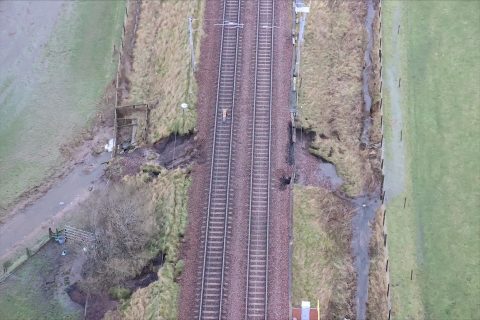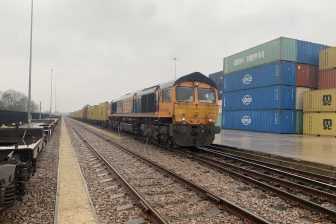
Storm damaged cross-border West Coast line closed until 6 January
West Coast Main Line - overhead shot of track damage by subsidence (Network Rail aerial services) Network Rail aerial services from press release
The cross-border West Coast Main Line between Scotland and England has been severed by a landslip following the end-of-year storm that ravaged the south of Scotland. The line, which is the busiest mixed traffic route in Europe, is closed between Glasgow and Carlisle, forcing all operators to seek alternative routes. Network Rail, the infrastructure agency, do not expect the line to be reinstated until at least Friday, 6 January.
Do you want to read the full article?
Thank you for visiting RailFreight.com. Become a member of RailFreight Premium and get full access to all our premium content.
Are you already a member?
Having problems logging in? Call +31(0)10 280 1000 or send an email to customerdesk@promedia.nl.





Resiliency and redundancy, thus robustness, is needed – at any vital of society!
(Rapid shifts, abnormal weather, etc. is the normal – and has to be provided for!)
All other modes, those resilient, upgrade, add to edge, by lower costs, etc…
Now, 2023, for an optimal multimodal transport system, upgrading of the Weak Link, has to be top priority!
Low risk, high quality supply chains is a must, etc!
(“Optimal maintenance”, current mantra at railways, is suboptimal – and not sustainable.)